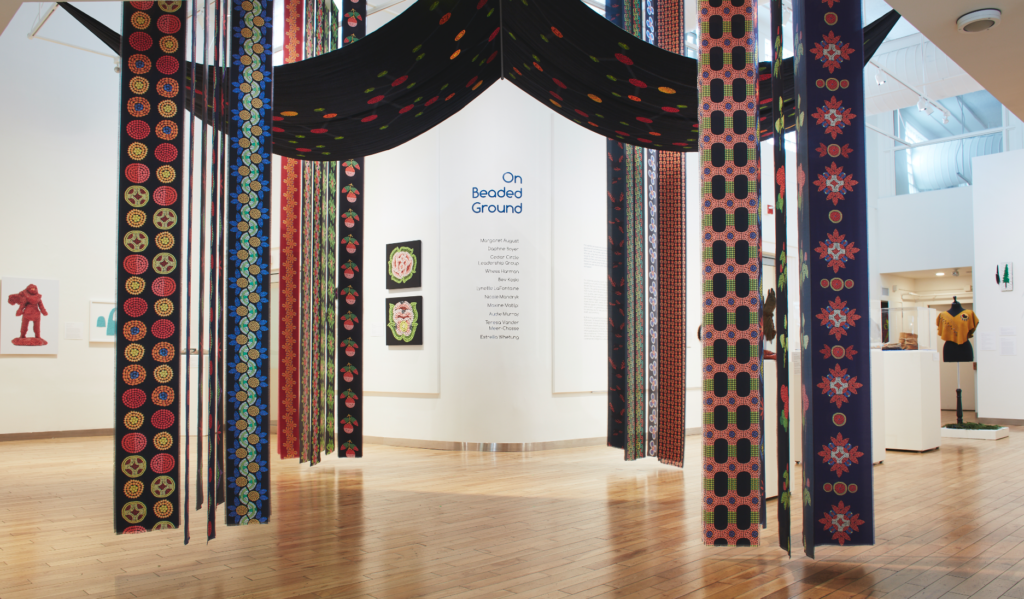
Digital textile printing offers wonderful opportunities for pushing the boundaries of traditional art forms. Here is just one example of how successful the transition can be.
Bead-making is a centuries-old art form and the exchange of desirable beads is thought to have been one of the earliest forms of trade known to humankind. In every region of the world, patterns of beaded work have been created to symbolize traditions of the local people. Often used to decorate shirts, shoes and garments, beadwork is worn as a representation of local cultures.
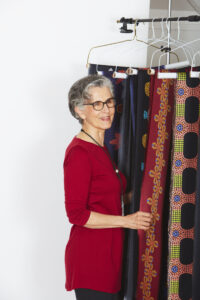 Canadian Métis artist Daphne Boyer recently perfected a unique digital beading technique where she combines photographs of individual berries with high-resolution digital tools to create 2D and 3D ‘scalable’ art works for print on paper and textiles. Her ‘Berries to Beads’ technique mirrors spectacular traditional beading. She uses her technique to create intricate patterned beadwork that celebrates her Indigenous heritage and honours plants as the basis of life on earth.
Canadian Métis artist Daphne Boyer recently perfected a unique digital beading technique where she combines photographs of individual berries with high-resolution digital tools to create 2D and 3D ‘scalable’ art works for print on paper and textiles. Her ‘Berries to Beads’ technique mirrors spectacular traditional beading. She uses her technique to create intricate patterned beadwork that celebrates her Indigenous heritage and honours plants as the basis of life on earth.
Canada is currently experiencing a resurgence of Indigenous art. First Nations, Inuit and Métis artists are creating bold, contemporary works that tie the past to the present, and the present to an imagined future. Canadians are increasingly embracing this art as one way to heal the country’s colonial legacy that decimated Indigenous populations and left many survivors confined to tiny reserves or simply landless.
The creation of beads in itself is an art form. To then take these beautiful little shapes and turn them into pattern will result in beautiful eye-catching images each of which represents the designers heartfelt passion. To transcribe this labour of love into a digital form pushes the opportunities of design further. Digital textile printing becomes an ideal modern technique for this traditional handworked craft.
Initially Daphne locates and picks the choicest berries before photographing them to create digital beads. Each digital bead is then meticulously and thoughtfully arranged into a pattern to create a scalable version of the traditional beadwork art form. In her latest work, ‘The Birthing Tent’, Daphne has used her digital method of beading to honour her great-grandmother Éléonore.
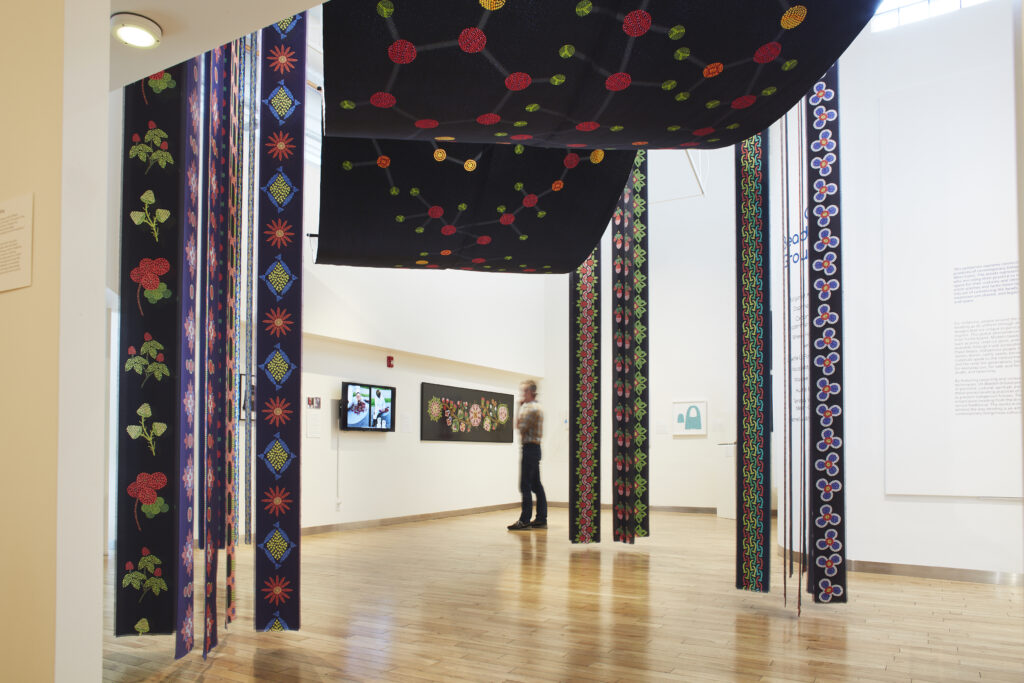
Éléonore was an itinerant midwife who criss-crossed Canada’s Northern Great Plains birthing babies. She was born on a buffalo hunt and raised her own children on an outpost with her trapper/fur-trader husband in the Red River region of Manitoba. This touching tribute of a 2-part birthing tent is formed from a printed cotton-velvet canopy and wide ribbons of digitally printed silk. Each of the 14ft silk ribbons is printed with colourful patterns of digital beadwork and each represents one of the births Éléonore attended to.
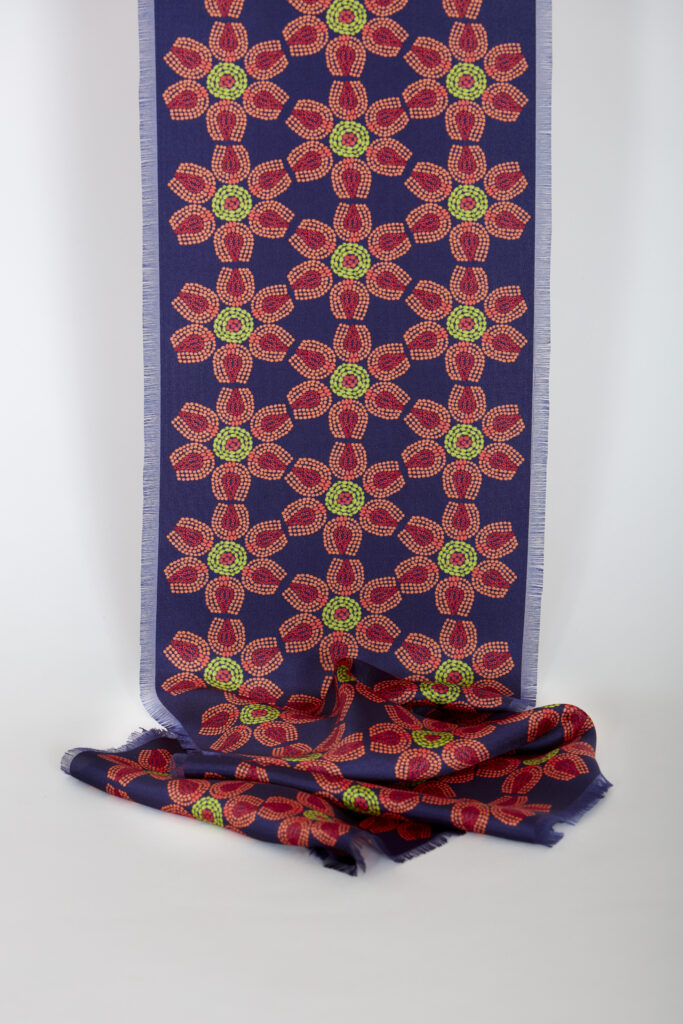
"The ‘beaded’ silk ribbons reference traditional ribbon skirts - symbols of Indigenous womens’ power, resilience and survival. Many such skirts have been created to honour the families and the memory of missing and murdered Indigenous women and girls."
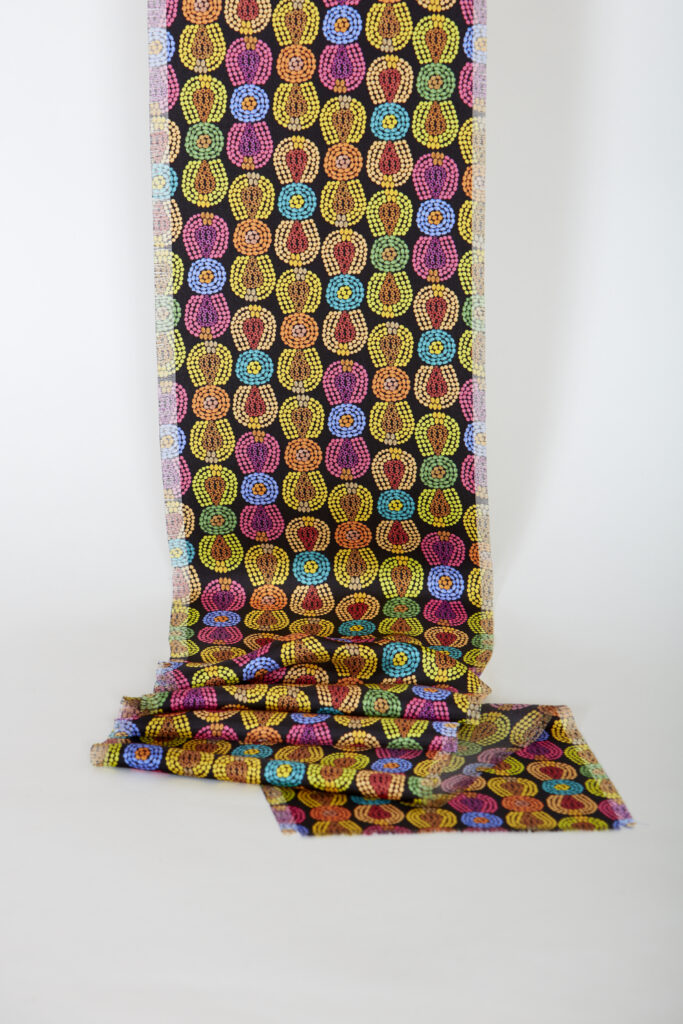
The Silk Bureau always enjoys seeing the outcomes of the digitally printed fabrics that we produce for our customers. It is a pleasure to be able to play some part in the creation of Daphne Boyers installation and artwork. The ribbon effect that has been created from the silk is stunning. Each digital bead has been printed with sharp detail and vivid colour using our Silk Light Twill. They appear almost 3D as a surface pattern print.
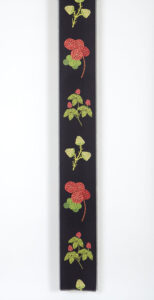
We look forward to seeing many more and wish Daphne success in all her future creations.
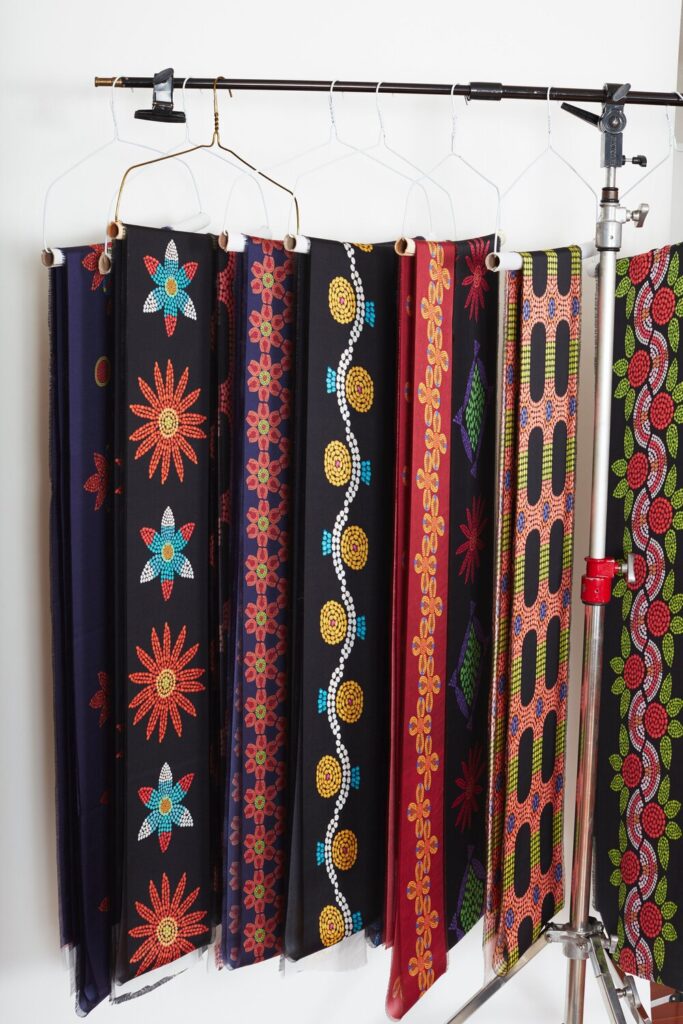
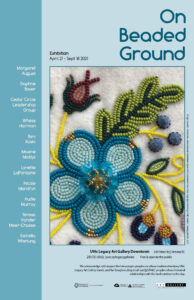
The Birthing Tent forms part of the On Beaded Ground exhibition that celebrates the beading practises of contemporary Indigenous artists living on the West Coast of Canada. The exhibition presents beadwork as a site of personal, cultural, spiritual and political resurgence.
The creation of this work was made possible thanks to financial support of the First Peoples’ Cultural Council and Canada Council for the Arts. Thanks to: Lina Samoukova, Etienne Capacchione, Barry Muise and Kim Metera for their technical support.
@teresasvc
@lorileewastasecoot
@uviclegacygalleries
@maxinemaltilpi
@annhillyer
@smokinglily
@catdigital
@daphnebboyer
@thesilkbureau
#visualart #métis #art #ribbons #beaded #beading #digitalart #contemporaryart #BirthingTent #indigenousart #contemporaryart #installation #metisart #metis #culture #art #artexhibition #OnBeadedGround #Victoria #beading #beadwork #digitalart
© The Silk Bureau Limited 2024
| Cookie | Duration | Description |
|---|---|---|
| cookielawinfo-checbox-analytics | 11 months | This cookie is set by GDPR Cookie Consent plugin. The cookie is used to store the user consent for the cookies in the category "Analytics". |
| cookielawinfo-checbox-functional | 11 months | The cookie is set by GDPR cookie consent to record the user consent for the cookies in the category "Functional". |
| cookielawinfo-checbox-others | 11 months | This cookie is set by GDPR Cookie Consent plugin. The cookie is used to store the user consent for the cookies in the category "Other. |
| cookielawinfo-checkbox-necessary | 11 months | This cookie is set by GDPR Cookie Consent plugin. The cookies is used to store the user consent for the cookies in the category "Necessary". |
| cookielawinfo-checkbox-performance | 11 months | This cookie is set by GDPR Cookie Consent plugin. The cookie is used to store the user consent for the cookies in the category "Performance". |
| viewed_cookie_policy | 11 months | The cookie is set by the GDPR Cookie Consent plugin and is used to store whether or not user has consented to the use of cookies. It does not store any personal data. |
The processes involved in digital textile printing causes the original fabric to shrink. If you are printing scarves, the size of the finished product will be important to you. For example, if you have square artwork, you will be expecting your finished scarf to be square!
To get the printed fabric closer to the size you need, all fabric intended for scarves must go through an extra step to reshape it. Please allow extra time on your deadlines to allow for this process.
Let us introduce you to the …
The stenter is an enormous piece of machinery that has many uses, including coating our fabrics and reshaping scarf orders.
After travelling through a solution to soften the fabric, it then passes over a flat bed, gripped on the selvedge edges to pull it back into shape.
It’s a long and precise process that needs to be carefully monitored.
If you have selected to use our hemming service, we will check the stentered fabric for you before we begin to finish your scarves. If you are not using our service, it’s up to you to check the size BEFORE you cut out the individual scarves from the fabric length. We cannot re-size after your scarves have been cut out.